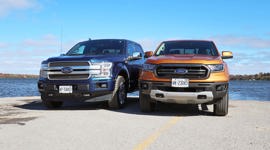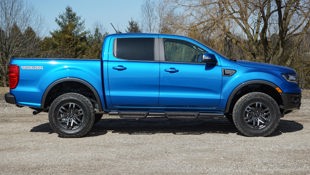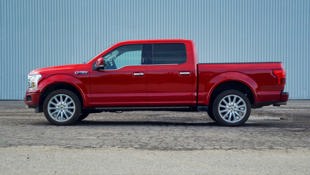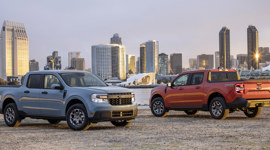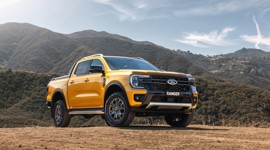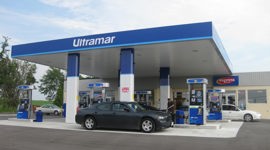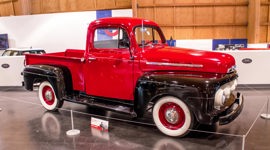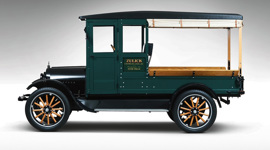There’s an all-new Ford Ranger expected to arrive in Canada for the 2024 model year. In the meantime, the current 2023 Ranger represents this pickup’s fifth year on sale in Canada. The Ford Ranger is built in Wayne, Michigan, while its larger sibling, the F-150 is built in both Dearborn, Michigan, and Claycomo, Missouri. The smaller Ford Maverick pickup is built in Sonora, Mexico.
The Maverick, Ranger, and F-150 represent the small, medium, and large options on Ford’s mainstream pickup truck menu. The Ranger comes in four trim grades with both five- and six-foot boxes and four-wheel drive as standard alongside a 2.3-litre turbocharged four-cylinder engine with 270 horsepower and 310 lb-ft of torque.
Pricing for a new model starts at $36,295 in XL 4WD guise, with the XLT opening the bidding from $40,145. The Lariat trim grade comes standard in SuperCrew configuration from $46,795.
Splitting the difference between the pricing of each of the Ranger’s trim grades gives us a model-range mid-way price point of about $42,000. Let’s round it up to $45,000, so you’ll perhaps have a few bucks left over for accessories or add-ons.
For $45,000, you can have whichever Ranger XLT model you like – or maybe even that top-dog Lariat if you can cough up a few extra bucks.
But what does that same budget get you in a used Ford F-150, and should you just buy one of those instead?
Below, we’ll dig into the details to help you consider important decision factors and ultimately make a smarter purchase decision between these two trucks.
The New 2023 Ford Ranger for $45,000
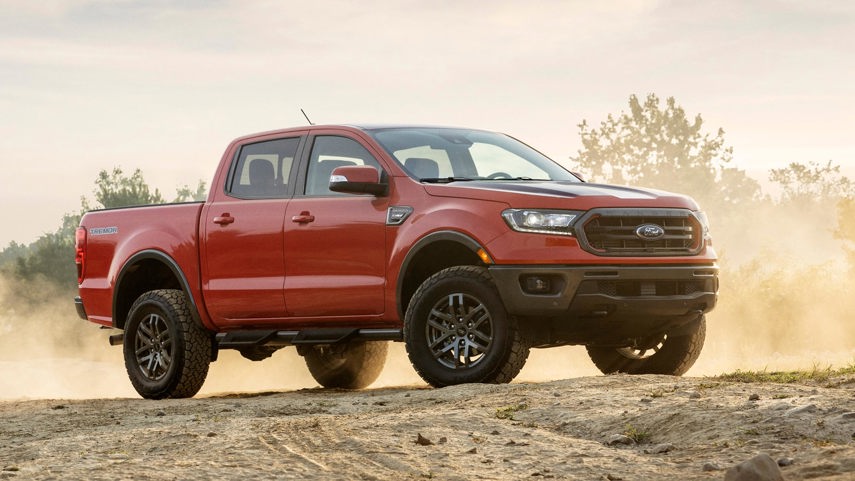
Go with a brand-new Ford Ranger, and your $45,000 will get you into an XLT Super Cab with a six-foot box, or an XLT SuperCrew with a five-foot box. Look for advanced driver assistance and safety technology, a back-up camera with reverse sensors, dual front climate control, remote start, the Ford Sync 3 infotainment system, and pre-collision alert. There’s also a technology package and an FX-4 off-road package available.
You’ll likely find this truck to be comfortable on rough terrain, rich with torque, and relatively easy on fuel, though the interior is looking dated these days and some drivers will wish for a more spacious cabin and more flexible rear seating and storage setup.
The Used Ford F-150 for $45,000
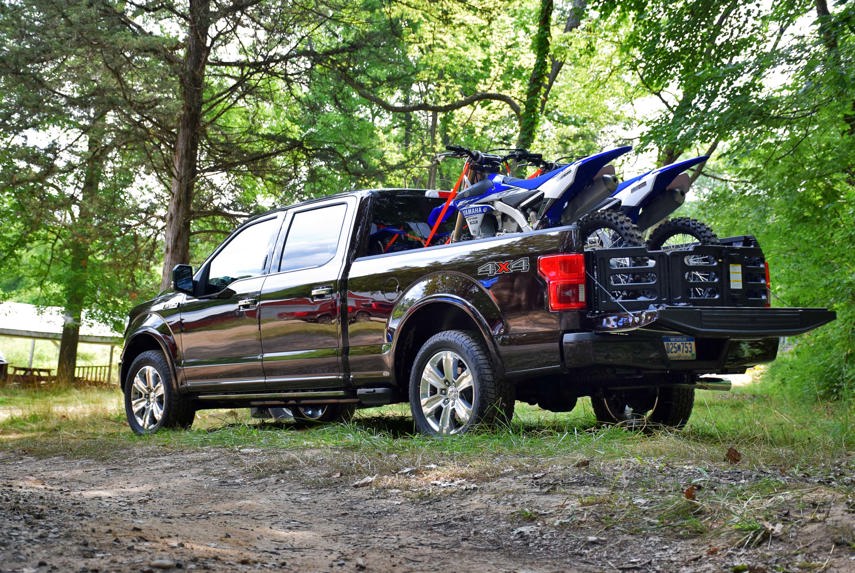
Spend that same $45,000 on a used Ford F-150, and your size and space problems disappear thanks to the big, open, and completely flat space you’ll find in the back of an F-150 Super Crew with its seats flipped up.
Used car listings in the AutoTrader marketplace show a decent selection of F-150 XLT 4x4 models with low to reasonable mileage in the 50,000 to 70,000-km range for $45,000 or less – typically at two to three years old with a 5.0-litre V8 engine, but often enough with EcoBoost V6 power if you can stretch your budget by a few bucks. Look for the same driver assistance technology you’ll find in the Ranger.
Lifecycles and Platforms
The Ranger I’m showing you here was initially brought to market in 2011 on the T6 platform. Though on sale in international markets until 2018, it was the 2019 model year when the Ranger went on sale in Canada. This generation of Ranger will disappear soon, and an all-new model will replace it for 2024.
On the other hand, the latest-generation F-150 hit the road for model year 2021. The P702 platform is the F-150’s 14th generation, with a mid-cycle refresh and new engine updates expected for 2024 – alongside the launch of that all-new Ranger.
To summarize, an F-150 that’s a few years old is still a far more modern vehicle than a brand-new 2023 Ranger regarding its underpinnings and platform, especially on board, due to the F-150’s more modern-looking cabin.
Performance
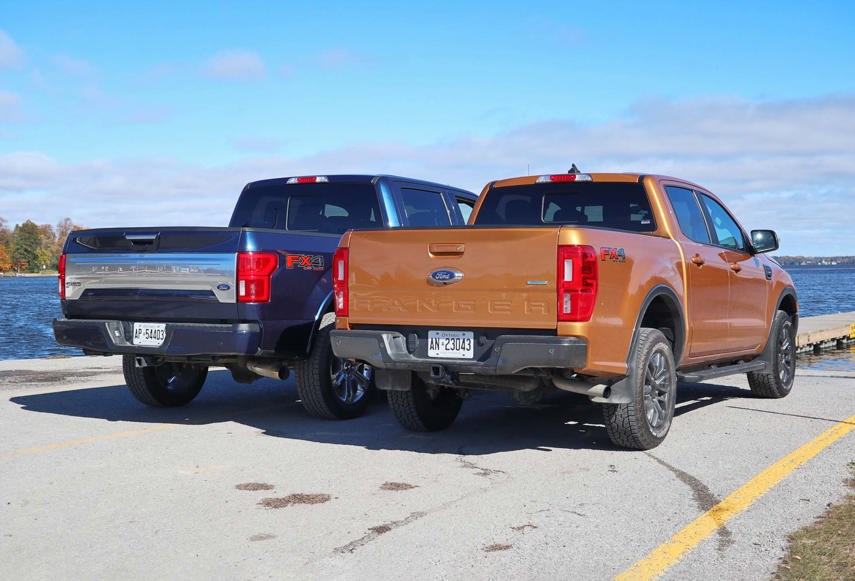
The Ford Ranger’s engine is a 2.3-litre EcoBoost (turbocharged) four-cylinder engine that generates 270 horsepower and 310 lb-ft of torque. Four-wheel drive is standard, as is a 10-speed automatic transmission. Maximum towing capacity is 7,500 pounds.
The F-150 you’re considering will have one of several engines under its hood. The standard engine is a non-turbocharged 3.3-litre V6 with 290 horsepower and 265 lb-ft of torque. The 2.7-litre EcoBoost V6 is turbocharged for 325 horsepower and 400 lb-ft of torque. The 5.0-litre V8 generates 400 horsepower and 410 lb-ft of torque, and the 3.5-litre EcoBoost V6 generates 400 horsepower and 500 lb-ft of torque.
Towing capacity reaches 13,900 pounds in the F-150 when properly equipped.
Versus the new Ranger, a used F-150 can deliver up to 85 per cent more towing capacity at the same price point.
All available Ford F-150 engines listed here are more powerful than the Ranger’s standard engine, though the EcoBoost four-cylinder does make 15 per cent more torque than the base F-150’s 3.3-litre V6.
Elsewhere in the engine room, the F-150’s 2.7-litre EcoBoost V6 delivers 21 per cent more horsepower and 29 per cent more torque than the Ranger, while the 5.0-litre V8 delivers 48 per cent more horsepower and 32 per cent more torque for your dollar, leaving the 3.5-litre EcoBoost V6 to spin up 48 per cent more horsepower and a whopping 61 per cent more torque than the Ranger’s engine.
Fuel Costs
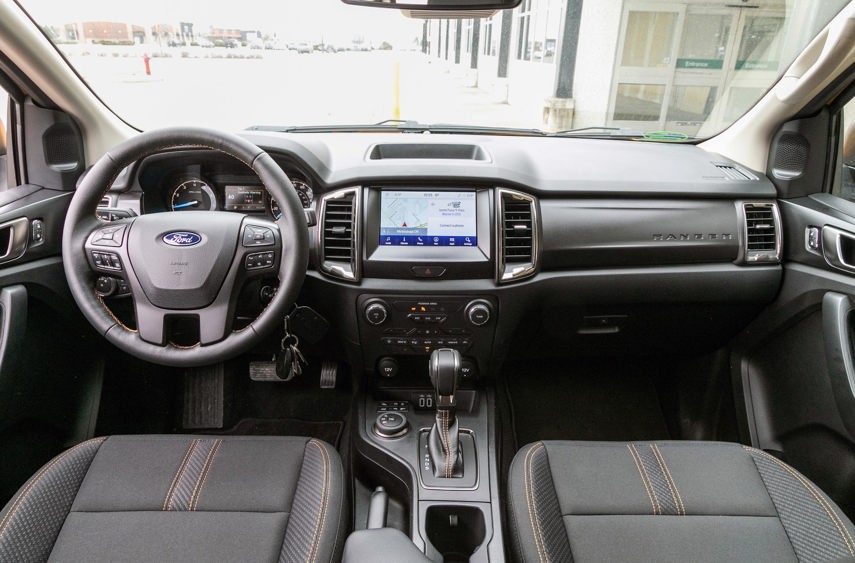
The truck and engine you choose will affect your monthly budget – but how serious are those added fuel costs for the more powerful engines in the F-150?
Suppose you drive 25,000 kilometres per year and pay $1.50 for a litre of gasoline. For the figures below, we’re only comparing trucks with four-wheel drive.
Driving 100 kilometres in a 4x4 Ranger requires about 11 litres of gas. Driving a Ford Ranger for 100 kilometres will, therefore, cost $16.50. If you’re driving 25,000 kilometres per year, expect an annual fuel bill of around $4,125.
Driving 100 kilometres in a 4x4 F-150 with a basic 3.3-litre V6 requires about 11.8 litres of gas, about $17.70 worth. If you’re driving 25,000 kilometres per year, you can expect an annual fuel bill of about $4,425, just $300 more than the smaller Ranger.
That same 100 kilometres in a 4x4 F-150 with the 2.7-litre EcoBoost V6 will use slightly less – 11.7 litres of gas to drive 100 kilometres. That’s a few bucks a month less than the F-150’s base engine, despite 35 more horsepower and 135 pounds more torque. You could call this engine a no-brainer.
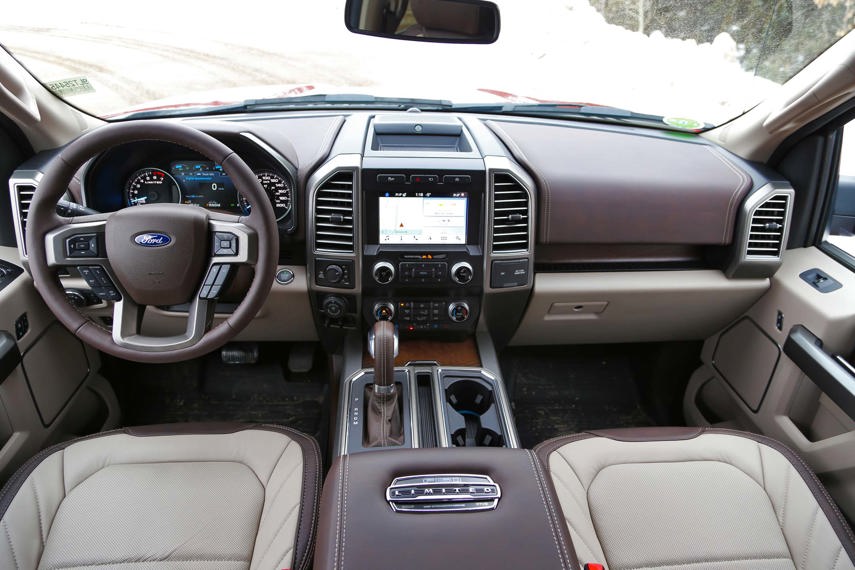
With the 5.0-litre V8 or 3.5-litre EcoBoost V6, the F-150 4x4 needs about 13 litres of fuel ($19.50) to drive 100 kilometres, for an annual fuel bill of $4,875. Though they generate the same horsepower output and fuel economy average, the bigger EcoBoost V6 delivers a full 100 lb-ft advantage in torque versus the non-turbocharged 5.0-litre V8.
The fuel bill of a Ranger 4x4 and an F-150 4x4 can be separated by just a few bucks, and going with the 2.7-litre engine in the F-150 gives you a major boost to power and size and (especially) towing capacity despite a very minor increase in fuel costs versus the smaller Ranger.
The 2.7-litre EcoBoost is slightly more efficient than the less powerful base 3.3-litre V6 in the F-150. Compared to the Ranger, this engine gives you 20 per cent more horsepower and 29 per cent more torque in exchange for just 7 per cent more of your fuel dollars.
Step your annual fuel budget up a few hundred dollars more and you’re into the 5.0-litre V8, making 48 per cent more horsepower and 32 per cent more torque for just 18 per cent more money. That’s about the same increase in fuel dollars as the 3.5-litre EcoBoost V6, which turns in 61 per cent more torque.
Given our math here, the difference in annual fuel costs between the 270-horsepower Ranger and the F-150 with the most powerful engine option is about $750, or roughly $63 per month.
Size and Dimensions
The Ford Ranger and Ford F-150 represent the medium and large options for the automaker’s mainstream pickup lineup (with the compact Maverick as the small option).
How much bigger and roomier is an F-150 than a Ranger? When comparing F-150 SuperCrew and Ranger SuperCab configurations, the F-150 has a 46.2-cm longer wheelbase and comes in at 5.3 cm wider and 53.3 cm longer in terms of overall length.
The turning diameter is also nearly 14 per cent bigger in the F-150, so keep that in mind if you’ll frequently find yourself navigating tight quarters.
In the F-150, you’ll also find 5.1 cm more rear headroom than the Ranger, which is a 5.2 per cent advantage. The F-150 offers nearly a full 25.4 cm more shoulder room in front and back, as well as 36 per cent more passenger volume versus the Ranger, for the same $45,000.
Making a Decision
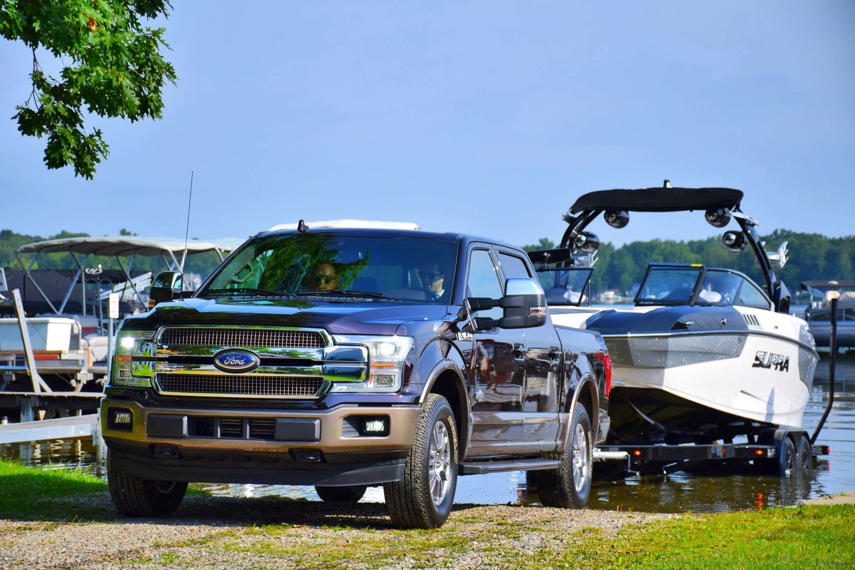
Though the F-150 will tend to be a little heavier on fuel than the Ranger, and though its larger size makes it less maneuverable in tight spaces, the availability of a more modern cabin, loads more room and power, and a more up-to-date look and feel are all reasons why a used one would be a worthy choice for your dollars in a $45,000 pickup truck.
Pickup shoppers not set on buying something brand-new at this price point will likely find the F-150’s significant advantages in size, power, torque and especially towing capacity compelling, especially given the relatively minimal fuel cost penalty versus the smaller Ranger.
Unless you’re set on a smaller truck or a brand-new one, a used F-150 seems like the smarter choice here – especially when you take steps to find a healthy used one, add extended warranty coverage to taste, or opt for a Certified Pre-Owned model with built-in roadside assistance and extended warranty for maximum peace of mind.
